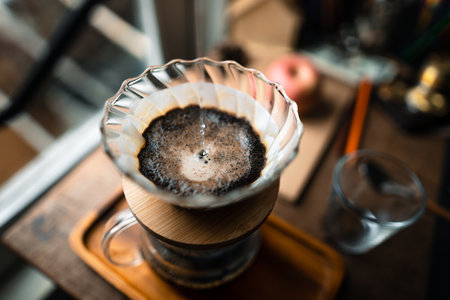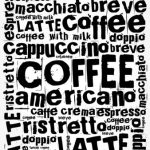Understanding Common Coffee Drinks
If youre visiting the U.S. or just want to blend in like a local at your neighborhood café, it helps to know the difference between common coffee drinks. With so many options on the menu, it can be confusing if youre not familiar with what each drink actually is. Heres a simple breakdown of popular coffee drinks you’ll often find across American coffee shops.
Popular Coffee Drinks in the U.S.
| Drink | Description | Best For |
|---|---|---|
| Drip Coffee | Classic brewed coffee made by dripping hot water over ground beans. | Everyday caffeine fix, simple and strong flavor lovers. |
| Latte | Espresso with lots of steamed milk and a small amount of foam on top. | Those who prefer a creamy, smooth drink with mild espresso flavor. |
| Cappuccino | Equal parts espresso, steamed milk, and milk foam. | Coffee drinkers who like a stronger espresso taste with some frothy texture. |
| Cold Brew | Coffee brewed slowly with cold water over several hours for a smoother, less acidic taste. | Fans of iced coffee who want a bold but smooth drink. |
| Americano | Espresso diluted with hot water, similar strength to drip but different flavor profile. | Anyone who likes a more robust black coffee without bitterness. |
| Macchiato | A shot of espresso “stained” with a little bit of steamed milk or foam. | People who enjoy strong espresso with just a touch of creaminess. |
Hot vs. Iced Options
In the U.S., almost every drink can be ordered either hot or iced. Just ask! For example, an “iced latte” is simply a latte served cold over ice. Cold brew and iced coffee are especially popular during warmer months—or year-round in places like California and Florida.
Know Your Milk Alternatives
If you prefer non-dairy options, most cafés offer choices like almond milk, oat milk, soy milk, or coconut milk. You can request them when ordering your drink: “Can I get that with oat milk?” is something baristas hear every day.
Sizing Terms to Know
Coffee shops in the U.S., especially chains like Starbucks, use their own sizing terms. Here’s a quick guide:
| Term | Approximate Size (oz) | Used By |
|---|---|---|
| Tall | 12 oz | Starbucks and similar chains |
| Grande | 16 oz | Starbucks and similar chains |
| Venti (Hot) | 20 oz | Starbucks only |
| Small / Medium / Large | Varies by shop (typically 12/16/20 oz) | Independent cafés and many chains |
The Basics Make a Big Difference
The key to ordering coffee like a local is knowing what you like and how to ask for it clearly. Whether youre into strong espresso-based drinks or smooth cold brews, understanding these basics will help you order confidently and enjoy your coffee just the way you like it.
2. Know Your Sizes: Tall, Grande, Venti… and More
When ordering coffee in the U.S., especially at major chains like Starbucks, understanding cup sizes is key to sounding like a local. Unlike standard small, medium, and large labels used in many countries, American coffee shops often use unique names for their sizes—particularly popular chains.
Starbucks Sizes
Starbucks is famous for its Italian-inspired size names. Heres what they actually mean:
| Size Name | Ounces | Description |
|---|---|---|
| Tall | 12 oz | The smallest “standard” size at Starbucks (not actually tall!) |
| Grande | 16 oz | This is your medium-sized drink |
| Venti (Hot) | 20 oz | The large hot drink option |
| Venti (Cold) | 24 oz | Larger than hot Venti to allow for ice |
| Trenta (Cold Only) | 31 oz | The biggest size—only for select cold drinks |
Independent Cafés
If you’re visiting a smaller or independent coffee shop, you’ll likely see more traditional sizing terms like:
- Small: Around 8–12 oz
- Medium: Around 12–16 oz
- Large: Around 16–20 oz or more
A Quick Tip:
If youre unsure about the sizes, just ask! Baristas are used to questions like “How big is your medium?” and are happy to help.
Cultural Note:
Many Americans grab their coffee on the go, so larger sizes are quite common. Don’t be surprised if someone orders a massive iced coffee first thing in the morning—it’s just part of the daily routine!
Getting comfortable with these size names will help you avoid confusion and order with confidence wherever you go.
![]()
3. Customize Your Order Like a Local
In the U.S., coffee isnt just coffee—its a personal experience. Americans love to customize their drinks to match their taste, dietary needs, or mood. If you want to order coffee like a local, knowing how to personalize your cup is key. Heres how most people in the U.S. do it:
Milk Alternatives
Dairy isnt for everyone, and many coffee drinkers opt for plant-based options. When ordering, simply let your barista know which milk you prefer.
| Milk Option | Flavor Profile | Common Uses |
|---|---|---|
| Almond Milk | Nutty, slightly sweet | Lattes, iced coffees |
| Soy Milk | Creamy, neutral | Cappuccinos, mochas |
| Oat Milk | Smooth, slightly sweet | Lattes, flat whites |
| Coconut Milk | Light, tropical flavor | Iced drinks, flavored lattes |
Add Flavor Shots
If you have a sweet tooth or just want to mix things up, adding flavor syrups is super common. Most cafés offer a variety of flavors—you can even combine them!
| Popular Flavors | Taste Notes |
|---|---|
| Vanilla | Classic and sweet |
| Caramel | Rich and buttery |
| Hazelnut | Nutty and warm |
| Pumpkin Spice (seasonal) | Spicy and festive |
Add Extra Espresso Shots (“Shots”)
Need an extra caffeine boost? Ask for an additional shot of espresso in your drink. For example: “Can I get a large latte with an extra shot?” Locals often say “make it a double” or “add a shot.” Each shot adds more bold flavor and energy.
Sweeteners & Sugar Options
You’ll also find several sweetener choices beyond regular sugar. Here are some of the common ones:
- White sugar: Classic and simple.
- Raw sugar: Coarser texture, slightly richer taste.
- Honey: Natural sweetness with floral notes.
- Stevia or Splenda: Zero-calorie alternatives.
- Sugar-free syrups: Great for cutting calories while keeping flavor.
A Sample Custom Coffee Order:
“Hi! Can I get a medium oat milk latte with one pump of vanilla syrup and an extra shot of espresso?” — That’s how locals do it!
The key is not being afraid to ask for what you like. Most cafés are happy to adjust your order—it’s all about making that perfect cup just for you.
4. Drive-Thru Etiquette and In-Store Lingo
If youre in the U.S., ordering coffee isnt just about what you want—its also about how you ask for it. Whether youre at a busy drive-thru or standing at the counter of your favorite local café, knowing the right words and behavior can make your experience smoother and more enjoyable.
Drive-Thru Etiquette
Drive-thru coffee spots are super popular in the U.S., especially during morning rush hours. Here are some tips to help you order like a local:
- Be ready: Know what you want before its your turn. Check the menu while waiting in line.
- Speak clearly: Use a friendly tone and speak loud enough for the barista to hear through the speaker.
- Keep it simple: Avoid long explanations. Stick to the drink name, size, and any changes you want (like non-dairy milk).
- Have payment ready: This keeps the line moving quickly for everyone.
Common Drive-Thru Phrases
| You Say | What It Means |
|---|---|
| “Hi! Can I get a medium iced latte with oat milk?” | A polite way to start your order with size, type, and milk preference. |
| “That’s it, thank you!” | This tells the barista you’re done ordering. |
| “Can I add a pastry to that?” | If you decide to add food after ordering your drink. |
In-Store Ordering Tips
If youre ordering at the counter inside a coffee shop, most of the same rules apply—but theres usually more room for conversation. Here’s what helps:
- Acknowledge the barista: A simple “Hi!” or “Good morning!” goes a long way.
- Name your order in this order: Size → Drink Type → Customizations (milk, flavors, etc.). For example: “Tall vanilla latte with almond milk.”
- Know your sizes: Some chains like Starbucks use their own terms like “Tall,” “Grande,” and “Venti.” Others just use small, medium, and large.
Coffee Size Terms Cheat Sheet
| Coffee Shop | Small | Medium | Large |
|---|---|---|---|
| Dunkin’ | Small | Medium | Large |
| Starbucks | Tall (12 oz) | Grande (16 oz) | Venti (20 oz hot / 24 oz cold) |
Lingo Locals Use
- “Room for cream”: Leave space in the cup so you can add cream yourself.
- “To go” or “for here”: Let them know if youll be taking your drink out or drinking it there.
- “Shot in the dark”:A brewed coffee with an added espresso shot—great for extra energy!
5. Tipping and Paying: What’s Expected
When ordering coffee in the U.S., its helpful to understand the local tipping culture and common payment methods. Whether youre grabbing a quick drip coffee or ordering a custom latte, heres what you need to know about tipping and paying like a local.
Tipping Etiquette at Coffee Shops
In many U.S. coffee shops, especially independent cafes and smaller chains, tipping is appreciated — even for counter service. While it’s not mandatory, its considered a nice gesture if you received friendly service or ordered something more complex.
Typical Tip Amounts
| Order Type | Suggested Tip |
|---|---|
| Basic drip coffee or tea | $0.50 – $1 |
| Espresso drinks (like lattes or cappuccinos) | $1 – $2 |
| Larger orders or custom drinks | 15% – 20% of total |
You’ll often see a tip jar near the register or be prompted to leave a tip on the screen if paying with a card.
How to Pay for Your Coffee
Most coffee shops in the U.S. accept multiple forms of payment. Here are the most common options:
Popular Payment Methods
- Credit/Debit Cards: Widely accepted, including Visa, MasterCard, AmEx, and Discover.
- Contactless Payments: Tap-to-pay with your phone or card using Apple Pay, Google Pay, or Samsung Pay is very common.
- Mobile Apps: Major chains like Starbucks have their own apps where you can order ahead, pay, and earn rewards.
- Cash: Still accepted almost everywhere, but exact change is appreciated in small shops.
If youre visiting a busy city or using drive-thru service, contactless and mobile app payments can speed things up. Locals often use these for convenience and loyalty points.
Pro Tip:
If youre unsure whether to tip or how much to leave, follow the lead of other customers or simply ask politely — baristas are usually happy to help!


